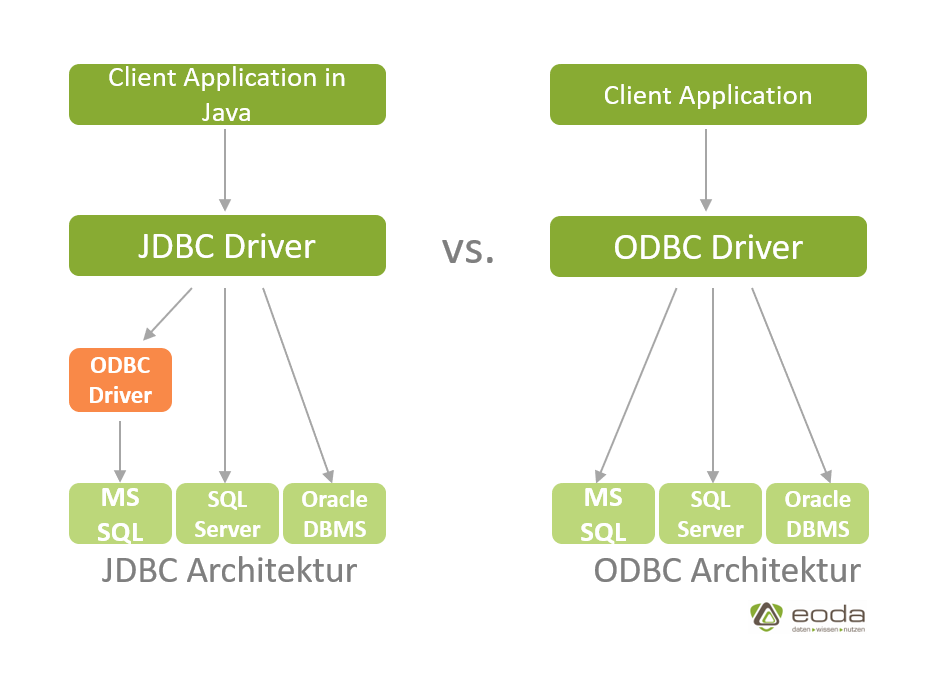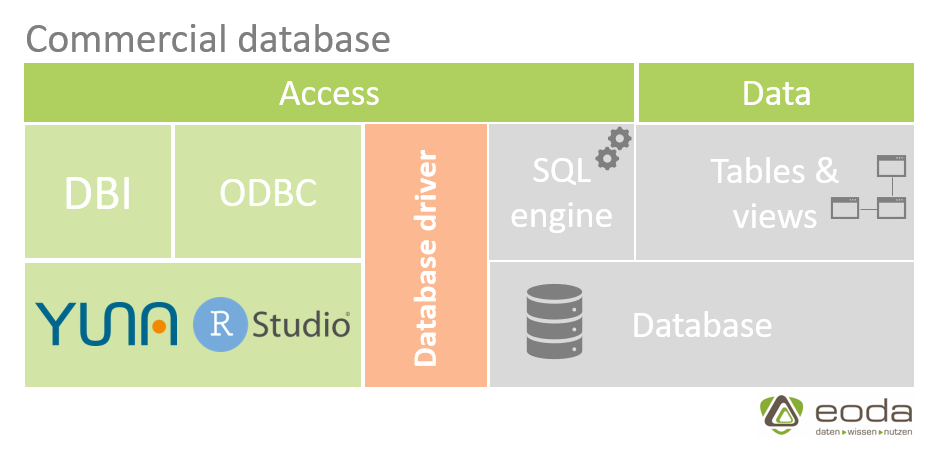In addition to the implementation of the the right architecture, authentication and authorization, a one-time database connection is also an important component for implementing an optimal IT infrastructure. In our blog article, we show you the advantages of a unique central configuration of different database drivers in order to get close to the data.
Every developer has his favorite tools and frameworks to work with when connecting to the database. The number of different front-end and back-end combinations increases the complexity of the analysis. Any Relational Database Management System (RDBMS) that needs its own driver may also be platform and language dependent. For this reason, many types of database performance problems can arise.
By providing a server, the recurring client-side configuration effort is shifted to a one-time central configuration of different database drivers. In this way, proximity to the data is created and, finally, user-friendly access is made possible. Optimum data access is particularly important for the work of data scientists. It enables them to access the relevant data quickly and efficiently.
JDBC or ODBC as back-end system?
The RBDMS is connected to the Integrated Development Environment (IDE) via a back end. This can be provided, for example, by Java Database Connectivity (JDBC) or Open Database Connectivity (ODBC). Both back ends have an API (Application Programming Interface) that implements communication with the database on the client side. Both back end systems are provided by many RDBMS providers by default, but there is one central difference: While the ODBC back end is language-independent, the JDBC depends on the Java programming language. Although the language independence of ODBC is reflected in a higher complexity of the back end, additional layers such as the communication from JDBC to MS SQL (left side) via ODBC (orange box) can be avoided. Finally, it can be said that using the ODBC back end is advantageous because it is platform- and language-independent.


DataBase Interface as a front end for efficient database connections
As front end it is recommended to use the interlingual DataBase Interface (DBI). This interface defines a set of classes and methods like those implented in R’s DBI, Perl’s DBI and Python’s DB-API. This sends uniform commands to the ODBC back end, which translates the commands into the correct database management system logic. This approach allows a connection to a database (e.g. SQL Server, Oracle, MySQL, PostgreSQL, SQLite, …) to be established efficiently and very easily if the basic ODBC drivers are installed.
In addition, it offers the advantage to address any database with the same functions and methods.
database commercial
The installation and configuration of ODBC is the work that requires the most effort.
Author
Get started now:
We look forward to engaging with you.